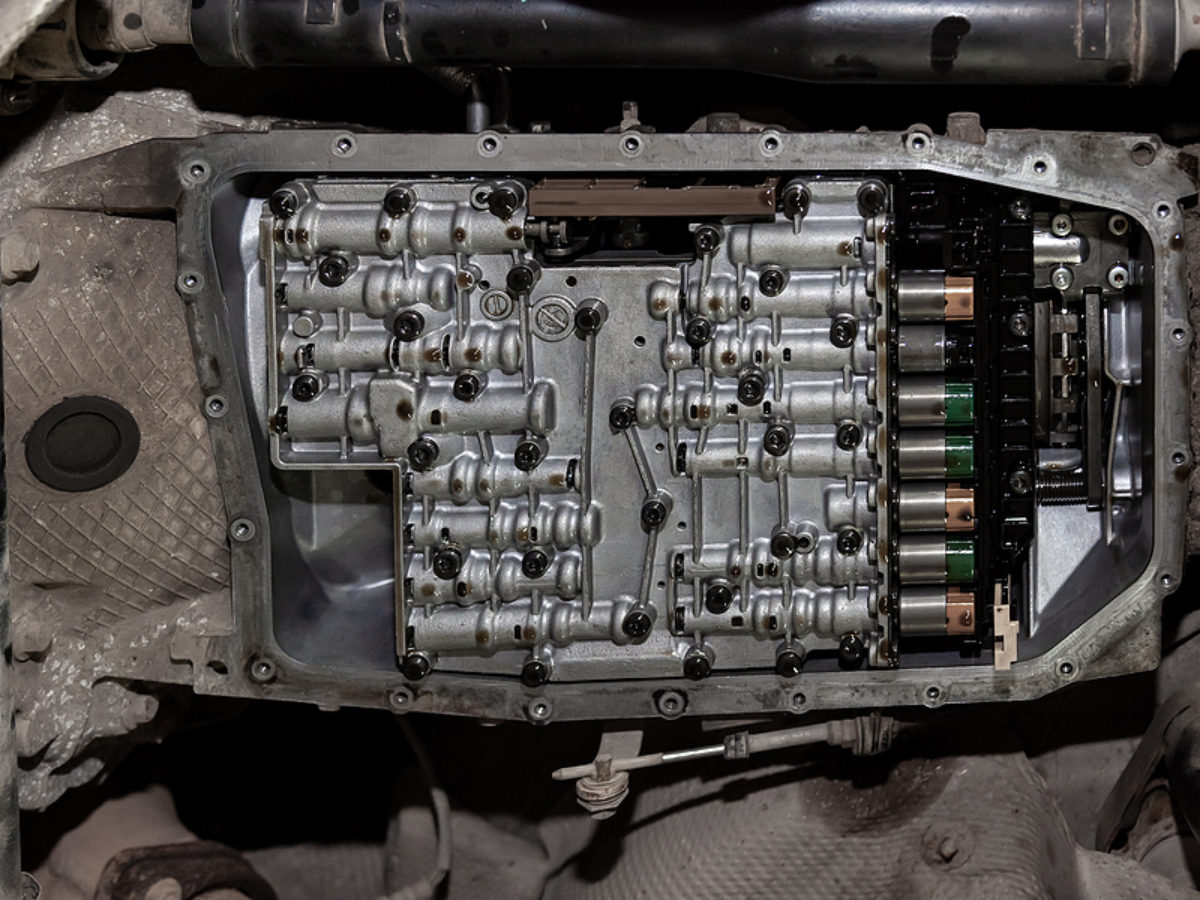A transmission shift solenoid is normally located inside the automatic transmission, either on the valve body or attached to the side of the transmission. It controls fluid flow within the transmission, allowing it to shift into different gears. On most vehicles, it will be a small electric device that looks similar to a relay and can be easily replaced if necessary.
Sometimes referred to as an E4OD Solenoid Pack, its purpose is critical for proper shifting operation and performance of your vehicle’s drivetrain system.
The transmission shift solenoid is typically located inside the side of your vehicle’s transmission. It is a cylindrical device that helps to move fluid through the system and can be accessed by removing a few bolts on either side of it. If you are having trouble locating your solenoid, consult your car’s manual or take it to an automotive shop for help.
How to Replace Transmission Solenoids
Can I Replace Transmission Solenoid Myself?
Yes, you can replace a transmission solenoid yourself if you have the right tools and knowledge. However, since this is an intricate and complex job that requires expertise in car repair and maintenance, it would be best to leave it to a professional mechanic or auto shop. Before attempting the replacement on your own, make sure you have read up on instructions related to replacing the solenoid as well as safety precautions regarding working with electrical components in cars.
Additionally, ensure that all necessary parts are available before beginning the process.
What Happens When the Shift Solenoid Goes Out?
When the shift solenoid goes out, it can cause a variety of issues. The most common issue is that the vehicle will have difficulty shifting gears or may even become stuck in one gear. Additionally, you may experience poor fuel economy as the solenoid helps regulate when to allow fluid into and out of the transmission.
Without it, more gas will be consumed than necessary as well as having trouble shifting. If not repaired quickly, further damage can occur to other components such as clutches or bands which can lead to expensive repairs.
How Do You Reset a Shift Solenoid?
Resetting a shift solenoid is relatively straightforward. Begin by locating the shift solenoid and disconnecting it from its power source, then remove the mounting bracket that holds the solenoid in place. Next, check to make sure there are no loose wires or broken parts, then reinstall the mounting bracket with new bolts if necessary.
Finally, reconnect the power source and turn on your vehicle’s ignition switch to reset the shift solenoid. If all goes well, your vehicle should now be able to smoothly transition between gears again!
How Many Solenoids are in a Transmission?
The exact number of solenoids in a transmission depends on the make, model and year of your vehicle. Generally speaking, most modern automatic transmissions contain around 10 to 12 solenoids that regulate various aspects of the transmission such as gear selection, fluid pressure, shift timing and torque converter lockup. These solenoids are typically located inside the valve body which is housed within the transmission’s oil pan.
As technology advances, more sophisticated solenoid systems have been developed with an increased number of components for improved performance and reliability.

Credit: www.youtube.com
Transmission Solenoid Fuse
The transmission solenoid fuse is an essential part of a vehicle’s electrical system. It serves as a safety measure to prevent the transmission from overheating and causing damage, by cutting off power to the solenoids if any problems occur. The fuse should be checked regularly for signs of wear or corrosion, and replaced when necessary in order to ensure that your vehicle’s transmission remains safe and reliable.
Transmission Shift Solenoid Replacement
When the transmission shift solenoid in your vehicle needs to be replaced, it’s important to do so as soon as possible. If left unattended, this can cause a variety of issues with shifting gears and overall performance. To replace the shift solenoid, you’ll need access to a specialized tool that allows you to remove the old part and install the new one.
Depending on your make and model of car, the cost for a replacement shift solenoid is usually between $100-$200.
Transmission Shift Solenoid Symptoms
If your vehicle is having issues shifting, it could be a sign that the transmission shift solenoid has gone bad. Common symptoms of a faulty solenoid include delayed gear shifts, hard shifts between gears, and trouble going into neutral or reverse. Additionally, you may experience an illuminated check engine light or hear whining noises coming from the transmission during normal operation.
If any of these symptoms appear in your car, it is important to have them checked out by a qualified mechanic as soon as possible in order to prevent further damage.
Conclusion
In conclusion, the transmission shift solenoid is an important part of a car’s transmission system. It is located within the vehicle’s transmission and can be accessed by removing some of the components in order to gain access to it. Although this procedure can be complicated, it is necessary for proper maintenance and repair of your vehicle.
Knowing where it is located will help you save time and money when dealing with any issues related to your transmission system.



